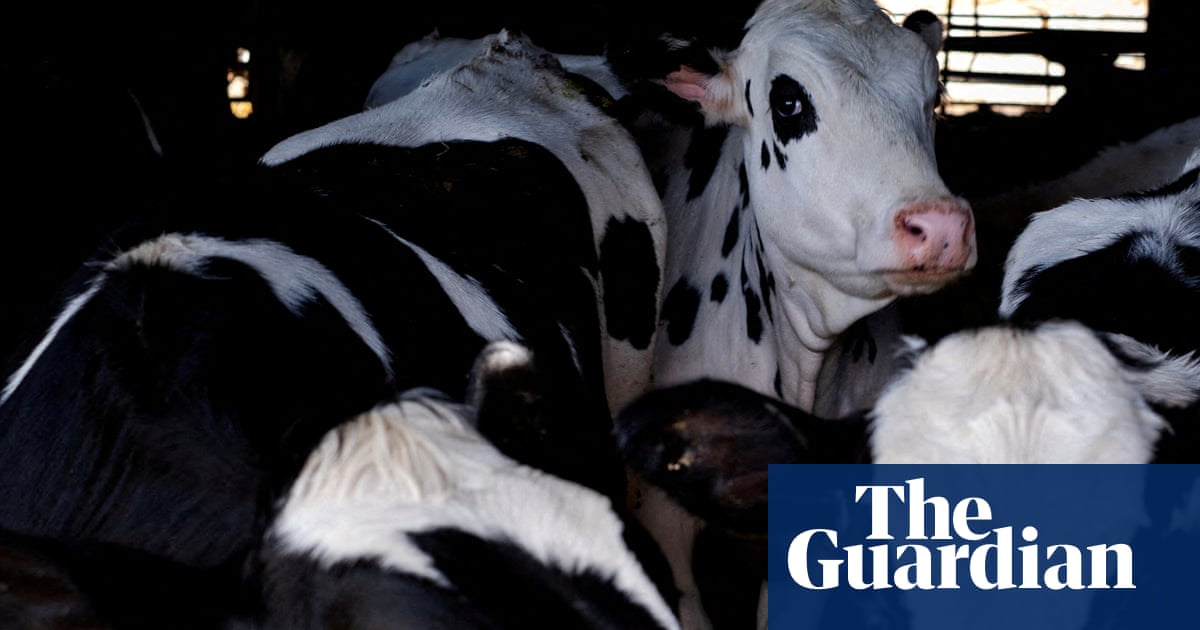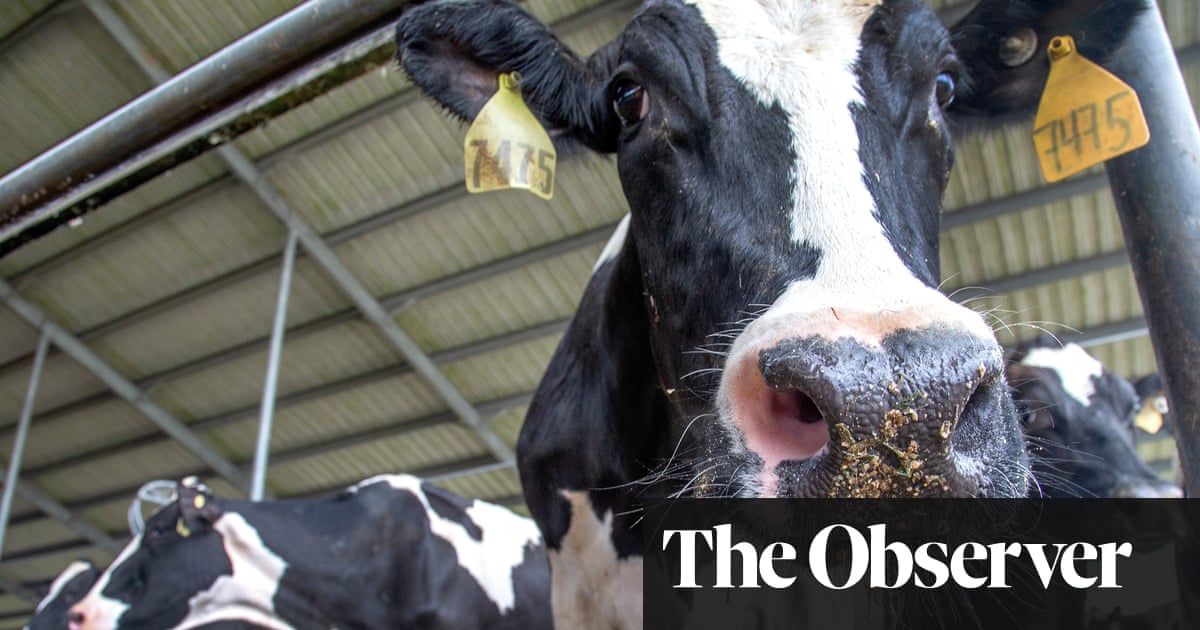
A Michigan dairy worker has been diagnosed with bird flu – the second human case associated with an outbreak in US dairy cows, after a case emerged in Texas earlier this spring.
The new patient had mild eye symptoms and has recovered, US and Michigan health officials said in announcing the case on Wednesday afternoon. The worker had been in contact with cows presumed to be infected, and the risk to the public remains low, officials said.
A nasal swab from the person tested negative for the virus, but an eye swab tested positive, “indicating an eye infection”, the US Centers for Disease Control and Prevention (CDC) said in a statement.
The first case happened in late March, when a farm worker in Texas was diagnosed in what officials called the first known instance globally of a person catching this version of bird flu from a mammal. That patient also reported only eye inflammation and recovered.
The CDC said “similar additional human cases could be identified” given high levels of the virus in raw milk from infected cows, and the extent of the spread in dairy cows.
The US Department of Agriculture (USDA) said it believes unpasteurized milk is the primary vector for transmitting the virus among cows, though officials do not know exactly how it spreads.
To limit transmission in cattle, the USDA in late April started requiring dairy cows to test negative before being shipped across state lines.
“It’s likely that there will be several cases that emanate from exposure to infected cows and their milk amongst farm workers,” said Amesh Adalja, an infectious disease expert at the Johns Hopkins Center for Health Security in Baltimore, Maryland.
“The key thing is to make sure that testing is wide enough to capture them,” he added.
Since 2020, a bird flu virus has been spreading among more animal species – including dogs, cats, skunks, bears and even seals and porpoises – in scores of countries. The detection in US livestock earlier this year was an unexpected twist that sparked questions about food safety and whether it would start spreading among humans.
That has not happened, although there has been a steady increase of reported infections in cows. As of Wednesday, the virus had been confirmed in 51 dairy herds in nine states, according to the US agriculture department.
Fifteen of the herds were in Michigan. Health officials there have declined to say how many people exposed to infected cattle have been tested or monitored.
The virus has been found in high levels in the raw milk of infected cows, but government officials say pasteurized products sold in grocery stores are safe because heat treatment has been confirmed to kill the virus.
The new case marks the third time a person in the United States has been diagnosed with what is known as type A H5N1 virus. In 2022, an incarcerated person in a work program picked it up while killing infected birds at a poultry farm in Montrose county, Colorado. His only symptom was fatigue, and he recovered. That predated the virus’s appearance in cows.








